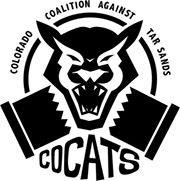The Earth First! Round River Rendezvous (RRR) is an annual convergence of folks from around the continent involved in direct action campaigns and other projects in defense of land, water, and all living creatures. At this week-long gathering, our loose network comes together to make new friends, up our skills, attend workshops and discussions, have fun, and take action.
The RRR typically takes place somewhere in the wild (on stolen, federally-managed “public land,” such as National Forest). Everyone who believes in fighting for the Earth, for life, and for justice is welcome to attend. We ask for a sliding-scale donation ($25-$100) from everyone to help us cover the cost of hosting the gathering, and to go to support next year’s RRR and Earth First! Organizers’ Conference, but no one will be turned away for lack of funds.
This year, the Rondy will take place somewhere in or around what is colonially known as the State of Utah—occupied land of the Shoshone, Goshute, Paiute, Ute, and Diné peoples. Over the years, organizers throughout the Colorado Plateau bioregion–from the briny flats of the Great Salt Lake to the southern reaches of Dinétah–have joined together in a slow process of movement building through cross-struggle collaborations that we hope this year’s RRR can serve to strengthen and multiply
Often, the post-Rendezvous action targets destructive extraction practices like mining, drilling, and logging. Last year, Earth First! joined Mijente and the American Indian Movement to shut down an Immigration and Customs Enforcement (ICE) office in Ohio.
As usual, there will be tons of rad workshops and presentations–direct action, climbing, blockades, ecology walks, campaign strategy, local land and water struggles, and more—as well as plenty of time to chill and also to throw down and take action. We want art, theater, and all kinds of radical creativity to take center stage. There will be a kids space with workshops and activities for kids (like hatchet throwing and bug eating)!
On the eve of the 40th anniversary of the founding of Earth First!, it seems appropriate that the 2019 national gathering will take place near the site of the very first EF! Rondy, which was held near Moab, Utah in 1980. This year, we want the Rondy to be a space where we can honor the inspiring and instructive stories from our past, while building on the work done over the decades to challenge oppression within our often transient and ever changing movement community.
We are raising funds to offer travel support for Black, Brown, and Indigenous organizers and folks in frontline struggles for land and water defense, indigenous self-determination, migrant justice, prison/police abolition, and other work that puts the justice back in environmental justice and the war back in eco-war. As an organizing team, we hope the RRR can reflect and amplify the work we’ve done regionally to connect struggles and build power within and across identities, cultures, and communities. If you would like help with travel expenses, please get in touch and talk to us about it beforehand. We hope to be able to cover all requests, but we are a scrappy grassroots organizing crew doing the best we can with limited resources.
If you have any questions, suggestions, or contributions, please get in touch.
No Compromise in Defense of Mother Earth!












































